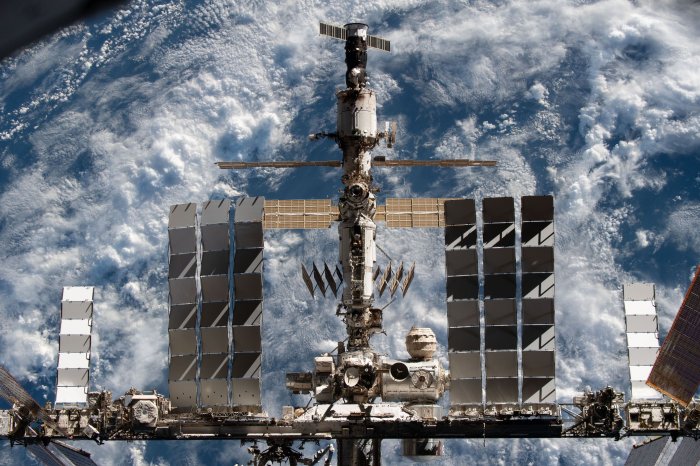A meteor streaks across the sky during a meteor shower on August 11 in Spruce Knob, W.Va. There will be two more meteor showers visible in the sky before the end of 2021. File Photo by Bill Ingalls/NASA/UPI |
License Photo
Nov. 30 -- The final month of the year also features the longest nights of the year, and the extra hours of darkness will have astronomical events that people of all ages can enjoy without a telescope.
The annual Geminid meteor shower will steal the spotlight as not just the top event of December, but also one of the best meteor showers of the entire year. However, onlookers will need to bundle up for a cold night to enjoy what the Geminids have to offer.
December will also bring the final eclipse of the year, although very few people will be able to see it.
The other big astronomy events of the month will be visible for millions of people, starting off with an event that can be seen even from the heart of bright cities.
1. Moon, Jupiter, Saturn and Venus to align (Dec. 10)
A trio of planets will align in the evening sky throughout most of December, but on the second Friday of December, the moon will fall in line with the planets.
Venus, Saturn and Jupiter will be visible after sunset in the southwestern sky and will all appear bright enough to see without the help of a telescope. Saturn is the dimmest of the three and will be sandwiched between Jupiter and Venus.
Between Dec. 6 and Dec. 9, the crescent moon will appear close to the planets, but on Dec. 10, it will align almost perfectly with the planets not long after nightfall.
Venus, Saturn and Jupiter will remain prominent features in the evening sky through much of the balance of December, but will set earlier and earlier each night.
2. Geminid meteor shower (Dec. 13-14)
One of the best meteor showers of the entire year is right around the corner, and those who endure a chilly December night could be rewarded with more than 100 meteors per hour.
The Geminids peak on the night of Monday, Dec. 13, and into the early hours of Dec. 14, but it's not just the onslaught of meteors that make this event so popular.
This is one of the few annual meteor showers that is active in the earlier evening hours, making it great for younger stargazers.
![]()
A person looking on at the glow of the aurora at the same time that a meteor streaks through the sky. Image by Mukul Parashar
Under ideal conditions, hourly rates could exceed 100 meteors per hour, but onlookers this year should curb expectations. Light given off by the nearly full moon this year will reduce the rates to about 30 to 40 meteors per hour.
If cloudy conditions prevail for the Geminids, there will be one more opportunity to spot some shooting stars before the calendar turns to 2022.
3. Meteor shower on the solstice (Dec. 21-22)
The December solstice will bring the shortest day and the longest night of the year to the Northern Hemisphere, as well as marking the official start of astronomical winter.
This year, the solstice occurs at 10:59 a.m. EST on Thursday, Dec. 21.
The longest night of the year brings an added bonus for skywatchers -- the Ursid meteor shower.
"The Ursids are often neglected due to the fact it peaks just before Christmas and the rates are much less than the Geminds, which peaks just a week before the Ursids," the American Meteor Society explains on its website.
Only about 10 meteors per hour are visible during the Ursids, and unlike the Geminids, are not typically visible until the second half of the night.
There is one more meteor shower unfolding in the next few months, and that is the Quadrantids, which peaks on the second night of the new year. This shower can occasionally produce outbursts on par with the Geminids, but typically only features roughly 20 to 30 meteors per hour.
After the Quadrantids, skywatchers will have to wait until late April for the next opportunity to watch a meteor shower.
The International Space Station is pictured from the SpaceX Crew Dragon Endeavour during a flyaround of the orbiting lab that took place following its undocking from the Harmony module’s space-facing port on November 8. Photo courtesy of NASA


















